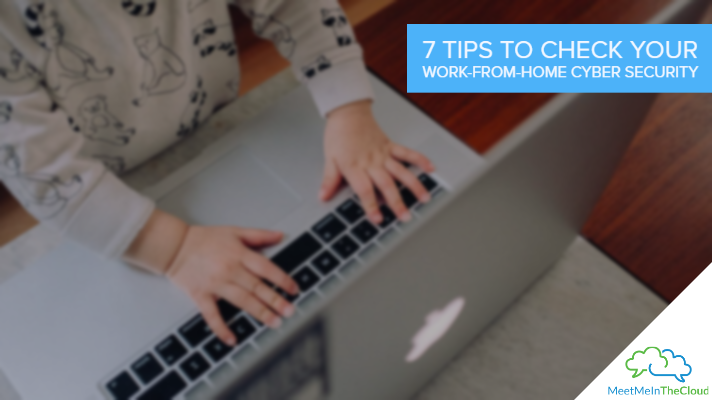In this “Flatten The Curve” blog series, we’ve told you about our 8 Tips for Working From Home and in our latest blog, we discussed preparing your work-from-home workspace with 5 easy tips. One of the tips on that blog was a suggestion to keep your network clean, and we want to make sure you know more of the top 7 aspects of making sure you are continuing to do business securely!
1. Ensure Your WiFi Connection Is Secure
Most Wi-Fi is secure by default, but if you have an older system, then it might not be, which means anyone in your neighborhood or apartment complex can see what you’re up to! Make sure your connection is secure before doing business. And by all means, avoid public Wi-Fi. If you have to work away from your home network, use a personal hotspot or some other method to encrypt your web connection.
2. Check That Security Software Is Up To Date
Take a look at your anti-virus and check: Is it even installed? Is it actively functioning? Is it fully updated? In addition, take a look at your browsers and make sure that privacy tools and add-ons are working properly as well.
3. Have A Backup Strategy And Plan
Backup all your important files and customer data systematically. If your company were to be the victims of a cyber attack, all data could be lost without a backup. Because of this, you need to create a plan to backup – don’t just assume that you’ll remember to backup those files: schedule the backup on your calendar so you won’t forget!
4. Secure Your Device
Even if it’s just your kids running around your house, lock your screen if you work in a space where others can access your device. Set an automatic timeout in case you are called away from your desk and don’t have a chance to lock your screen.
5. Create a Robust Passphrase
A strong password can be one of your best allies in work-from-home cybersecurity. Using a robust password makes it much more difficult for a hacker to get into your company’s system. They must be over eight characters long and use both upper and lowercase letters as well as numbers and symbols. The longer… the better. Best practice is to make passwords up to 64 characters.
6. Utilize Two-Factor Authentication
Most companies have already implemented two-factor authentication (i.e. when users must confirm their identity with a code sent to their mobile device after having used their username and password), but if your company doesn’t already, now is the time to get on board! Two-factor (or multi-factor) authentication makes it extra difficult for an attacker to access company data.
7. Update Employee Information Security Policies
Since many of your employees are now using personal devices to communicate and work, updating your information security policies can help protect you against their violations. Help employees be aware that they cannot use their personal email for company purposes, sync client information to a personal cloud account, use social media to discuss the company’s business, etc.
And there you have it! 7 quick fixes to your work-from-home cybersecurity that could save your team a lot of heartache in the long run! Please feel free to reach out to us and we can help you and your team create a more secure work-from-home experience!

